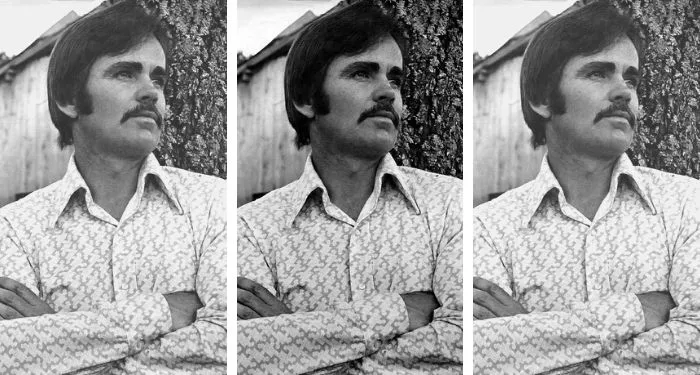When the Canadian philosopher Charles Taylor published his first book, The Explanation of Behavior, in 1964, academic psychology was dominated by the radical behaviorism of B.F. Skinner. Today Skinner is in bad odor, remembered as a kind of mad scientist who tortured lab rats with starvation and electric shocks to demonstrate the power of “operant conditioning.” But in his book The Behavior of Organisms (1938), he set out a simple and powerful argument why the best way to study the minds of animals and humans is to carefully observe what they do.
Traditionally, Skinner wrote, “the ultimate direction and control” of sentient creatures “have been assigned to entities placed within the organism and called psychic or mental.” Older ways of thinking called such entities souls or minds, while by Skinner’s day they were referred to by more scientific-sounding names such as the superego or the nervous system. But whatever the terminology, ascribing human or animal behavior to such an entity means “explaining an obvious (if unorganized) fact by appeal to something about which little is known.”
This is the opposite of scientific induction, which uses the known to explain the unknown. Behaviorism was an attempt to make psychology more like a science by starting with observable facts rather than vague, value-laden assumptions. The problem was that, in an attempt to limit itself to quantifiable data, it renounced most of the language we ordinarily rely on to describe reality.
When it comes to talking about human experience, Skinner wrote, “the vernacular is clumsy and obese; its terms overlap each other, draw unnecessary or unreal distinctions, and are far from being the most convenient in dealing with the data.” He had in mind not just notoriously contested terms like “truth” or “right and wrong” but even seemingly neutral words like “try” and “see,” since they implicitly postulate mental processes that can’t be observed. “The term ‘see’ must be rejected but ‘look toward’ may be retained,” Skinner decreed.
In attempting to purge scientific vocabulary of unjustified assumptions and abstractions, Skinner was doing for psychology what the logical positivists of the Vienna Circle, and their English followers like Gilbert Ryle and A.J. Ayer, had tried to do for philosophy. But in The Explanation of Behavior, which began as Taylor’s doctoral thesis at Oxford, he argued convincingly that this reductive approach ends up being unscientific in a different way.
By ruling out concepts like motive and purpose, behaviorism makes it impossible to give an accurate account of human experience, because that experience is structured by purposes. What Taylor calls “animate” beings do things for a reason, so much so that “action terms generally cannot be applied at all unless behaviour is directed to some goal.” As Skinner had said, a word like “try” implies the existence of a certain kind of mind, one with aims and desires, but Taylor argues that we know that animate beings do in fact have such minds, so that to describe what they do without reference to why they are doing it is a kind of falsification. Assuming that creatures don’t have minds is more unscientific than assuming that they do, since it requires us to dismiss the reality we actually experience in order to satisfy the claims of a theory.
Six decades after The Explanation of Behavior, Taylor, now ninety-three, has become one of the world’s most celebrated philosophers by pursuing the insight that human beings can only be understood phenomenologically—that is, by closely attending to what it is actually like to be one. His many books, including the landmark Sources of the Self (1989) and A Secular Age (2007), express in different ways the idea that a strictly materialist description of human beings is inadequate. Things like motives, meanings, values, and beliefs are the building blocks of our world, even if they can’t be quantified in the same way as our behavior or the electric currents in our neurons.
In the introduction to A Secular Age, for instance, Taylor writes about the experience of “fullness”:
Somewhere, in some activity, or condition, lies a fullness, a richness; that is, in that place (activity or condition), life is fuller, richer, deeper, more worth while, more admirable, more what it should be….
Our highest aspirations and our life energies are somehow lined up, reinforcing each other, instead of producing psychic gridlock.
In a religious culture, such experiences are understood in terms of the divine—a visitation from Apollo or an influx of the Holy Spirit. In the secular West today, educated people distrust those kinds of stories. But Taylor insists that while secularism helps determine the way we interpret spiritual experience—what he calls our “construals” of it—the experience itself continues to be valid. Even if we disagree about “the way of experiencing fullness; the source of the power which can bring us to this fullness; whether this is ‘within’ or ‘without’; and in what sense,” it is a fact—a scientific fact, even—that human existence has a spiritual dimension.
In his new book, Cosmic Connections, Taylor looks at modern poetry as a unique record of spiritual experience in a secular age. In particular, he is interested in the Romantic tradition that arose in the late eighteenth century, with poets like Friedrich Hölderlin in Germany and William Wordsworth in England, and evolved over the next century into the Symbolism of Charles Baudelaire and Stéphane Mallarmé and finally the modernism of Rainer Maria Rilke and T.S. Eliot. What makes these poets philosophically interesting is that they testify to intuitions—experiences of “fullness” and also of frightening emptiness—that scientific materialism would dismiss as illusory. But Taylor argues that “serious philosophy cannot afford to ignore poetic insight,” even though it “will often be incomplete, tentative, and enigmatic.”
Indeed, it is exactly because poetic language is incomplete and tentative that it is able to capture truths that simple assertion cannot. Take, for instance, the famous lines from “Tintern Abbey” in which Wordsworth describes how, returning to the scenes of nature where he grew up, he feels
A presence that disturbs me with the joy
Of elevated thoughts; a sense sublime
Of something far more deeply interfused,
Whose dwelling is the light of setting suns,
And the round ocean and the living air,
And the blue sky, and in the mind of man;
A motion and a spirit, that impels
All thinking things, all objects of all thought,
And rolls through all things.
Wordsworth’s language is a striking combination of grandeur and reticence. He solemnly evokes an experience of communion with nature—a “cosmic connection,” to use Taylor’s title. Yet he refrains from making any positive statement about what he is connecting to. The words “God” and “soul” don’t appear in this passage, much less explicitly Christian terms such as “the Holy Spirit.” Instead Wordsworth uses words like “presence” and “something,” which assert as little as possible about the objective reality of what he is experiencing. He doesn’t posit the existence of “a motion and a spirit that impels all thinking things” in the way that a pantheistic philosopher like Spinoza might. Rather, he evokes what it is like to feel such a spirit.
The distinctively modern quality of Wordsworth’s metaphysical reticence can be seen by comparing “Tintern Abbey” with “The Demonstration,” a poem written more than a hundred years earlier by Thomas Traherne. Traherne, who falls outside the scope of Taylor’s book, was an Anglican clergyman whose poems about nature often seem to prefigure Romanticism, though they weren’t discovered and published until the twentieth century. Like Wordsworth, he felt a cosmic connection to natural scenes, but for him this was a definitely Christian phenomenon:
The Godhead cannot prize
The sun at all, nor yet the skies,
Or air, or earth, or trees, or seas,
Or stars, unless the soul of man they please.
He neither sees with human eyes,
Nor needs Himself seas, skies,
Or earth, or any thing: He draws
No breath, nor eats or drinks by Nature’s laws.
The joy and pleasure which His soul doth take
In all His works is for His creatures’ sake.
To Traherne, the sublime beauty of nature declares the goodness of the God who created it, as well as the intimate relationship between God and human beings, who complete His creation by rejoicing in it. The experience of “fullness” comes preinterpreted by theology; as Traherne says earlier in the same poem, “Extremities of blessedness/Compel us to confess/A God indeed.”
The Romantic poets analyzed in Cosmic Connections felt no such compulsion. Rather, as Taylor writes, they “register a loss: of the earlier confidence that we could grasp and define the cosmic orders which tell us how to live.” This loss of trust in supernatural order—which Taylor, following Max Weber, calls “a ‘disenchantment’ of the world”—was the product of the scientific revolution, which discovered that the only ultimate reality is matter in motion. In A Secular Age, Taylor describes scientific materialism as the “immanent frame” of modern thought—immanent because it “slough[s] off the transcendent,” leaving no place for supernatural values or realities. He writes that “the immanent frame is common to all of us in the modern West,” including religious people, who must struggle to reconcile what they believe with what science tells them is true. (Taylor himself is a practicing Catholic.)
Already by the time Wordsworth and Hölderlin were born, both in 1770, the universe had become Newtonian, obedient not to the whim of a creator but to the laws of physics. Educated people could no longer simply see through nature to God, as Traherne did. For poetry, however, this loss was also an opportunity. If spiritual experience could no longer be simply asserted, then it was necessary to convince the reader of its validity by recreating it in the poem. Taylor writes that the Romantic poets’ “claim to insight and connection has to stand or fall on the force of the experience they make possible.” To deal with transcendence, poetry had to become transcendent.
Most of Cosmic Connections consists not of philosophical argument but of literary criticism—close readings of the poems and poets in whom Taylor finds this kind of transcendent insight. (The book’s length is owed in part to its extensive verse quotations, which are often given first in French or German and then in English translation.) “Tintern Abbey” is one of Taylor’s earliest examples, and the most straightforward. The odes of Hölderlin are more complex, as the poet makes ambiguous use of ancient Greek myths to express a profoundly modern, pantheistic sense of the divine. Taylor quotes the unfinished hymn “As on a holiday…”:
But now day breaks! I waited and saw it come,
And what I saw, the hallowed, my word shall convey,
For she, she herself, who is older than the ages
And higher than the gods of Orient and Occident,
Nature has now awoken amid the clang of arms,
And from high Aether down to the low abyss,
According to fixed law, begotten, as in the past, on holy Chaos,
Delight, the all-creative,
Delights in self-renewal.
The poem seems to say that religions and myths are merely vessels in which we try to contain the divine, metaphors for a power that lies beyond language. Yet it is by using language in such majestic fashion that Hölderlin is able to bring us into the presence of that primal power. As Taylor explains, “The task of poets is to divine…and make manifest this force.”
Taylor’s reading of Hölderlin is clearly influenced by Martin Heidegger, who devoted a number of essays to the poet and called “As on a holiday…” “the purest poem on the essence of poetry.” To Heidegger, poetry is more than just one way of using language; rather, “poetry itself first makes language possible,” since it is poets who create the human world by endowing words and names with meaning. Taylor makes the more limited claim that poems like Hölderlin’s have “something important to tell about our world.” They remind us that human beings are capable of experiencing “fullness,” “joy,” and “(re)connection” with powers beyond ourselves. And they are able to do this, even for readers who dwell in the immanent frame, because they are not assertive but mimetic: “The flow, the movement in the poem matches in some way, and connects up with a similar flow in reality.”
Over time, modern poetry had to become ever more subtle and surprising in order to defeat the reader’s expectations and open him or her up to the experience of transcendence. In one of his finest chapters, Taylor traces Rilke’s development from his early works to the Duino Elegies and the Sonnets to Orpheus, showing that he was far more tentative and self-questioning than Hölderlin was a century earlier. Where the eighteenth-century poet hailed the Greek gods, the twentieth-century poet writes, “At the crossing of two/heartways stands no temple for Apollo.” For Rilke, poetry isn’t the construction of verbal monuments but the trace of a way of being: “Learn to forget these songs. They elapse./True singing is a different breath/A breath serving nothing. A gust in God. A wind.” Yet Taylor finds that Rilke, too, offers a kind of cosmic connection. “In the transparent medium of poetry,” Taylor writes, “the realities of earth and sky show up in all their glory…and in response we experience a heightening, a fullness of existence.”
While these poets offer glimpses of fullness, Taylor finds in Baudelaire a frightening vision of spiritual emptiness. What Baudelaire calls “spleen” means something more than depression or ennui; it is the hellishness of a world in which transcendence is foreclosed, “a sombre universe ringed round with lead/Where fear and curses the long night explore.” Baudelaire saw that the encounter with nihilism is a characteristic modern experience: Taylor writes that spleen is “crushing our lived time, which deprives it of what we crave in it; some sense of meaning or purpose.” He goes on to argue that for Baudelaire, writing about spleen is a way of taming it: “The very fact of composing (or reading) these poems gives lived time a shape, a meaning.”
This is the central claim of Cosmic Connections, the philosophical argument that Taylor is making by means of literary criticism. Poetry doesn’t simply express the idea that life and the cosmos are mysteriously full of meaning; it actually creates that meaning by allowing the reader to experience it. This idea makes Cosmic Connections a sequel to Taylor’s book The Language Animal (2016), in which he explored the linguistic theories of the German Romantic thinkers he abbreviated as HHH—Hamann, Herder, and Humboldt.
For these writers, language is a creative power that brings our world into being by revealing new ways to think and feel. Taylor opposed HHH to the empiricists he called HLC—Hobbes, Locke, and Condillac—who saw language as simply designative, a way to assign labels to preexisting realities. Naturally Taylor rejects the HLC view of language, for the same reason that he rejected Skinnerian behaviorism half a century ago: he sees it as not just reductive and erroneous but disempowering. The ability to create our world through language is one of the ways human beings experience transcendence, while a low-minded scientism tries to deprive us of it.
Cosmic Connections finds in poetry the summit and confirmation of language’s creative power. Poets give us access to a more comprehensive vision of reality: “The task of the artist, whatever the medium, is to find a way to articulate the vision so as to make it accessible to others, and to himself at other times.” This task has fallen to the arts—poetry, but also fiction, music, and visual art—because the modern mind, trained in scientific materialism, rules out experiences of transcendence and vision as mere subjective illusions.
“In mechanistic terms,” Taylor writes, the mind is a “computing machine” surrounded by “inert objects,” and its only way of interacting with them is by “extracting information.” But when we read a poem like Gerard Manley Hopkins’s “The Windhover,” the bird ceases to be a datum and becomes intensely alive:
I caught this morning morning’s minion, kingdom
of daylight’s dauphin, dapple-dawn-drawn falcon, in his riding
Of the rolling level underneath him steady air, and striding
High there, how he wrung upon the rein of a wimpling wing
In his ecstasy!, then off, off forth on swing,
As a skate’s heel sweeps smooth on a bow-bend; the hurl and gliding
Rebuffed the big wind. My heart in hiding
Stirred for a bird—the achieve of, the mastery of the thing!
For Taylor, one might say, poetry coaxes the heart out of hiding. It allows us to know what we already know about the richness and mysteriousness of the world but are embarrassed to admit to ourselves in prose. Or, as he puts it in abstract philosophical language, poetry proves that “taking in information is not coterminous with experience.”
This is an idea to stir the hearts of poets and humanists, and Cosmic Connections is a wonderful demonstration of the power of literature to make us think and feel. But it also exhibits a certain haziness in Taylor’s philosophical position. His work is devoted to defending the reality of “unscientific” things like value, creativity, and transcendence, but it is possible to agree that these things really exist as parts of our experience without agreeing that they give us any information about objective reality, the cosmos that exists outside our minds. Cosmic connection can be a metaphysical error without ceasing to be an anthropological truth.
Taylor resists the idea that the transcendent experiences offered by poetry are merely subjective, preferring to say that they are “metabiological” or that they occur in an “interspace” between humanity and nature. But it’s never clear that these are more than euphemisms—ways of claiming a different kind of respect for these experiences than they deserve.
Indeed, at the same time that Taylor’s poets were writing elliptically about their visions and intuitions, trying to suggest cosmic truths without actually stating them, other poets were writing great poems about what it feels like to live in a world where such truths are definitely absent. A study of modern poetry that focused on Giacomo Leopardi, Matthew Arnold, and Wallace Stevens, rather than Hölderlin, Wordsworth, and Eliot, would yield a very different definition of poetic truth-telling than Taylor’s—one that finds consolation not in intimations of transcendence but in the resolute recognition of its impossibility.



















 English (US) ·
English (US) ·